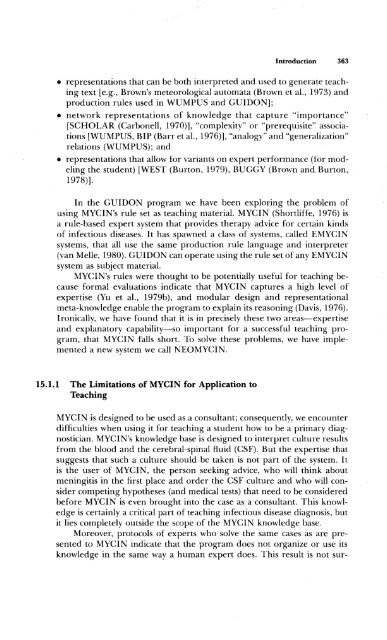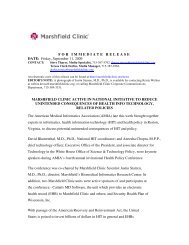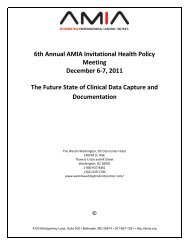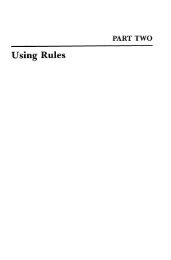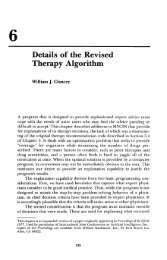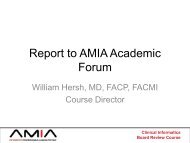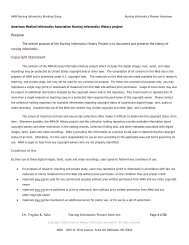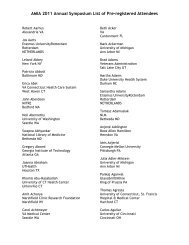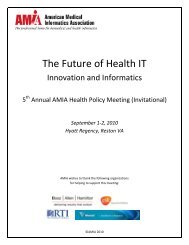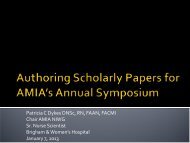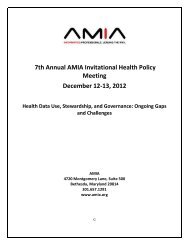Chapter 15 - People
Chapter 15 - People
Chapter 15 - People
You also want an ePaper? Increase the reach of your titles
YUMPU automatically turns print PDFs into web optimized ePapers that Google loves.
Introduction 363• representations that can be both interpreted and used to generate teachingtext [e.g., Brown's meteorological automata (Brown et aI., 1973) andproduction rules used in WUMPUS and GUIDON];• network representations of knowledge that capture "importance"[SCHOLAR (Carbonell, 1970)], "complexity" or "prerequisite" associations[WUMPUS, BIP (Barr et aI., 1976)], "analogy" and "generalization"relations (WUMPUS); and• representations that allow for variants on expert performance (for modelingthe student) [WEST (Burton, 1979), BUGGY (Brown and. Burton,1978)].In the GUIDON program we have been exploring the problem ofusing MYCIN's rule set as teaching material. MYCIN (Shortliffe, 1976) isa rule-based expert system that provides therapy advice for certain kindsof infectious diseases. It has spawned a class of systems, called EMYCINsystems, that all use the same production rule language and interpreter(van Melle, 1980). GUIDON can operate using the rule set of any EMYCINsystem as subject material.MYCIN's rules were thought to be potentially useful for teaching becauseformal evaluations indicate that MYCIN captures a high level ofexpertise (Yu et aI., 1979b), and modular design and representationalmeta-knowledge enable the program to explain its reasoning (Davis, 1976).Ironically, we have found that it is in precisely these two areas-expertiseand explanatory capability-so important for a successful teaching program,that MYCIN falls short. To solve these problems, we have implementeda new system we call NEOMYCIN.<strong>15</strong>.1.1 The Limitations of MYCIN for Application toTeachingMYCIN is designed to be used as a consultant; consequently, we encounterdifficulties when using it for teaching a student how to be a primary diagnostician.MYCIN's knowledge base is designed to interpret culture resultsfrom the blood and the cerebral-spinal fluid (CSF). But the expertise thatsuggests that such a culture should be taken is not part of the system. Itis the user of MYCIN, the person seeking advice, who will think aboutmeningitis in the first place and order the CSF culture and who will considercompeting hypotheses (and medical tests) that need to be consideredbefore MYCIN is even brought into the case as a consultant. This knowledgeis certainly a critical part of teaching infectious disease diagnosis, butit lies completely outside the scope of the MYCIN knowledge base.Moreover, protocols of experts who solve the same cases as are presentedto MYCIN indicate that the program does not organize or use itsknowledge in the same way a human expert does. This result is not sur-


